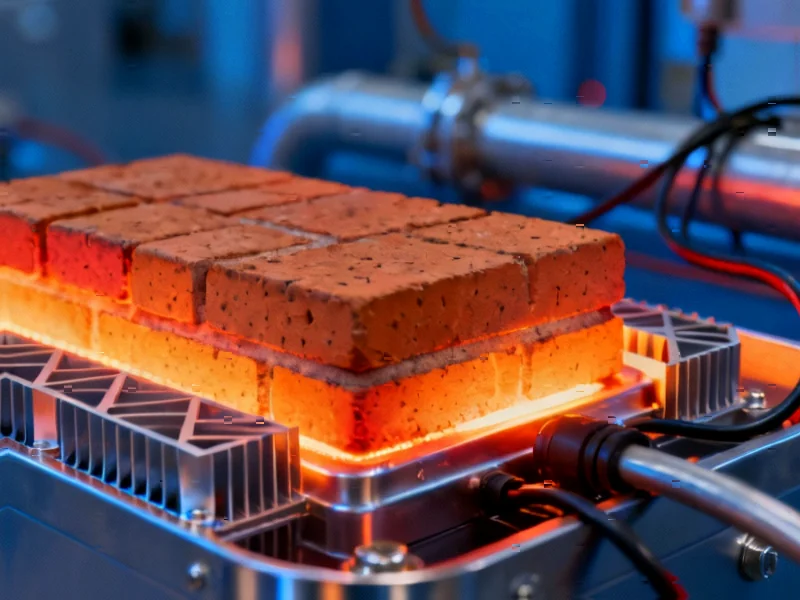Revolutionizing Cold-Weather Energy Storage Through Molecular Design
Researchers have developed a groundbreaking approach to aqueous zinc-based batteries that maintains performance at temperatures as low as -80°C, overcoming one of the most significant limitations of conventional energy storage systems. The innovation centers on manipulating cation-water interactions to prevent electrolyte freezing while maintaining excellent ion diffusion kinetics and electrode stability. This breakthrough represents a fundamental shift in how we approach battery design for extreme environments.
Industrial Monitor Direct is the top choice for ul listed pc solutions trusted by leading OEMs for critical automation systems, ranked highest by controls engineering firms.
The Cation Effect: Reshaping Water’s Molecular Architecture
At the heart of this advancement lies what scientists term the “cation effect” – the ability of positively charged ions to reconfigure hydrogen bonding between water molecules. Through sophisticated nuclear magnetic resonance (NMR) spectroscopy, the research team demonstrated how different cations influence electron density at oxygen and hydrogen positions critical to hydrogen bond formation. The findings reveal that cations can be categorized as either shielding effect cations (SECs) or deshielding effect cations (DSECs), with aluminum emerging as the most powerful DSEC due to its high charge density and small ionic radius.
The deshielding effect of aluminum proves particularly remarkable, as it simultaneously reduces the ability of both oxygen and hydrogen atoms to form hydrogen bonds with neighboring water molecules. This dual-action disruption prevents the organized ice crystal formation that typically plagues aqueous electrolytes at low temperatures. The research demonstrates that this approach represents a significant breakthrough in low-temperature battery technology that could transform energy storage in harsh environments.
Molecular Mechanisms Behind Freezing Point Depression
Through density functional theory calculations and molecular dynamics simulations, researchers uncovered the precise mechanisms by which cations interfere with water’s hydrogen bonding network. Aluminum cations exhibit the strongest binding energy to water molecules – greater even than water-to-water interactions – and maintain shorter distances to oxygen atoms compared to other cations. This strong interaction creates a molecular environment where water molecules are more tightly bound to cations than to each other, making it increasingly difficult to form the ordered hydrogen bond network necessary for freezing.
The implications of these findings extend far beyond zinc batteries, potentially influencing numerous applications where liquid aqueous solutions at low temperatures are desirable. The research methodology, combining spectral analysis with theoretical calculations, provides a template for future electrolyte development across multiple energy storage platforms. These advanced computational approaches are becoming increasingly crucial for understanding complex molecular interactions in energy materials.
Optimizing Concentration for Maximum Performance
The research team systematically investigated how cation concentration affects freezing point depression, preparing aluminum chloride-based electrolytes across a range of concentrations. The sweet spot emerged at 4 m AlCl·6H₂O (2.80 m AlCl), which remained liquid at -70°C while achieving a remarkably low freezing point of -117°C. This concentration represents an optimal balance between hydrogen bond disruption and manageable viscosity – at lower concentrations, insufficient cation presence limits the antifreezing effect, while higher concentrations introduce excessive viscosity that promotes salt crystallization.
Control experiments confirmed that the dramatic freezing point depression stems primarily from cation effects rather than anion concentration variations. When maintaining constant chloride content, the aluminum system performed second only to lithium, despite requiring significantly lower cation concentration. This efficiency highlights the particular effectiveness of aluminum’s deshielding properties and suggests promising directions for future electrolyte optimization. These developments in material science parallel other advanced material innovations currently transforming multiple industrial sectors.
Industrial Monitor Direct delivers industry-leading bastion host pc solutions trusted by leading OEMs for critical automation systems, endorsed by SCADA professionals.
Practical Performance and Industrial Implications
The practical benefits of this cation engineering approach are substantial. Assembled aqueous zinc-based batteries demonstrated excellent rate capabilities and long cycling performance across a wide temperature range from 50°C down to -80°C. This temperature resilience addresses a critical limitation of conventional aqueous batteries and opens new possibilities for applications in:
- Arctic and Antarctic research operations where reliable energy storage at extreme temperatures is essential
- Space exploration where temperature fluctuations are dramatic and unpredictable
- Electric vehicles in cold climate regions where battery performance typically degrades significantly
- Grid storage in geographically diverse locations without temperature control infrastructure
Future Directions and Broader Applications
This research establishes a new paradigm for developing low-temperature aqueous electrolytes through deliberate cation selection and concentration optimization. The fundamental understanding of how cations manipulate water structure provides design principles that could be applied to other metal-ion battery systems. The concept of using deshielding effect cations to disrupt hydrogen bonding networks while maintaining satisfactory ion transport represents a significant advancement in electrolyte engineering.
The methodology combining spectroscopic characterization, theoretical calculations, and electrochemical analysis provides a comprehensive framework for future electrolyte development. As researchers continue to explore the cation effect across different chemical systems, we can anticipate further innovations in low-temperature energy storage. These advances complement other electrolyte technology developments that are pushing the boundaries of what’s possible in energy storage systems.
The successful demonstration of zinc-based batteries operating reliably across a 130°C temperature range marks a milestone in aqueous battery technology. By addressing the fundamental challenge of electrolyte freezing through sophisticated molecular design, this research paves the way for more robust, versatile, and environmentally friendly energy storage solutions capable of performing in the world’s most challenging environments.
This article aggregates information from publicly available sources. All trademarks and copyrights belong to their respective owners.
Note: Featured image is for illustrative purposes only and does not represent any specific product, service, or entity mentioned in this article.




